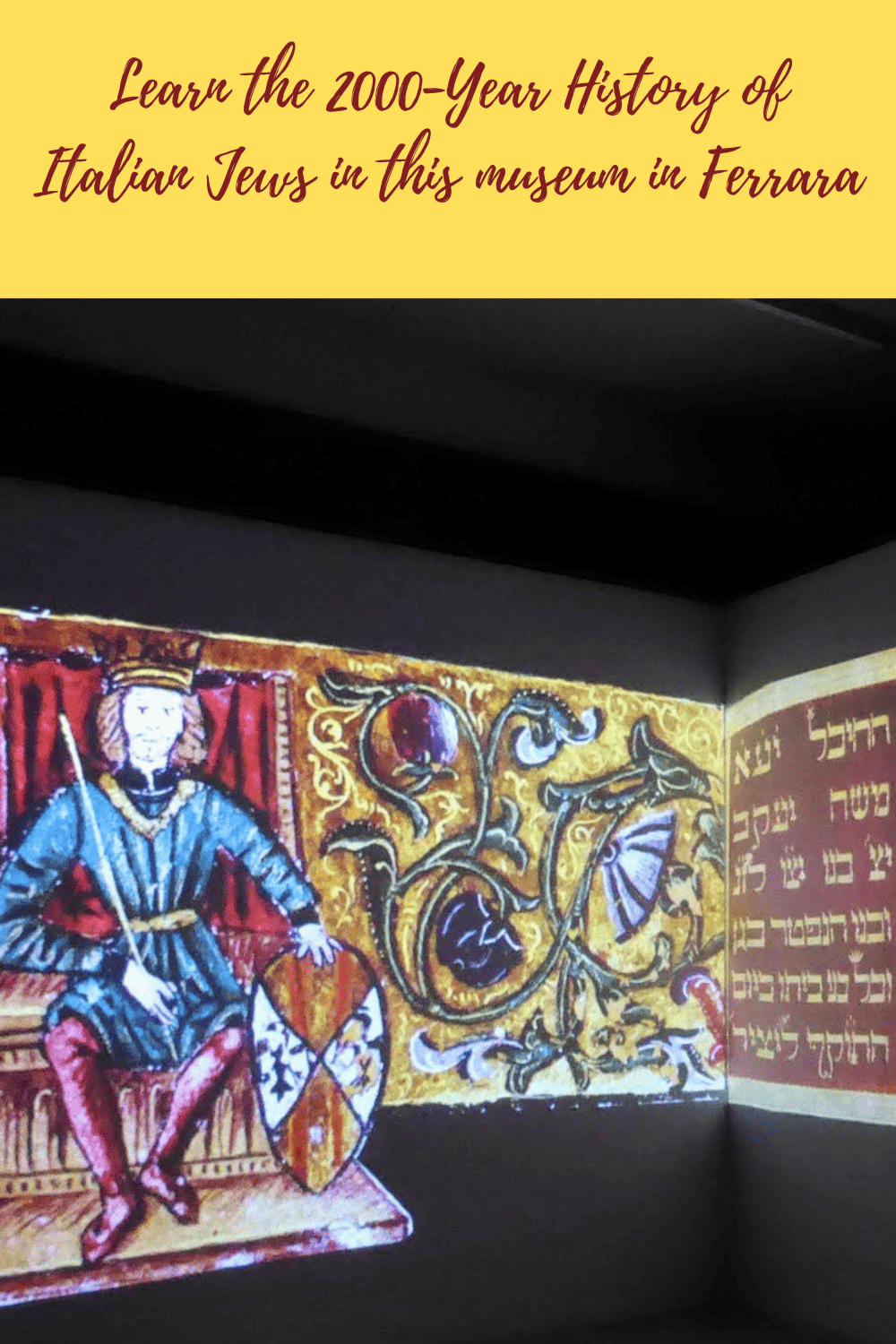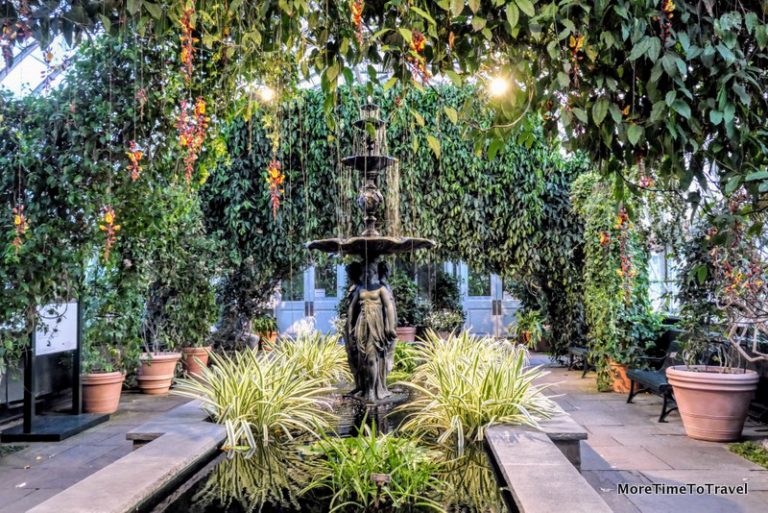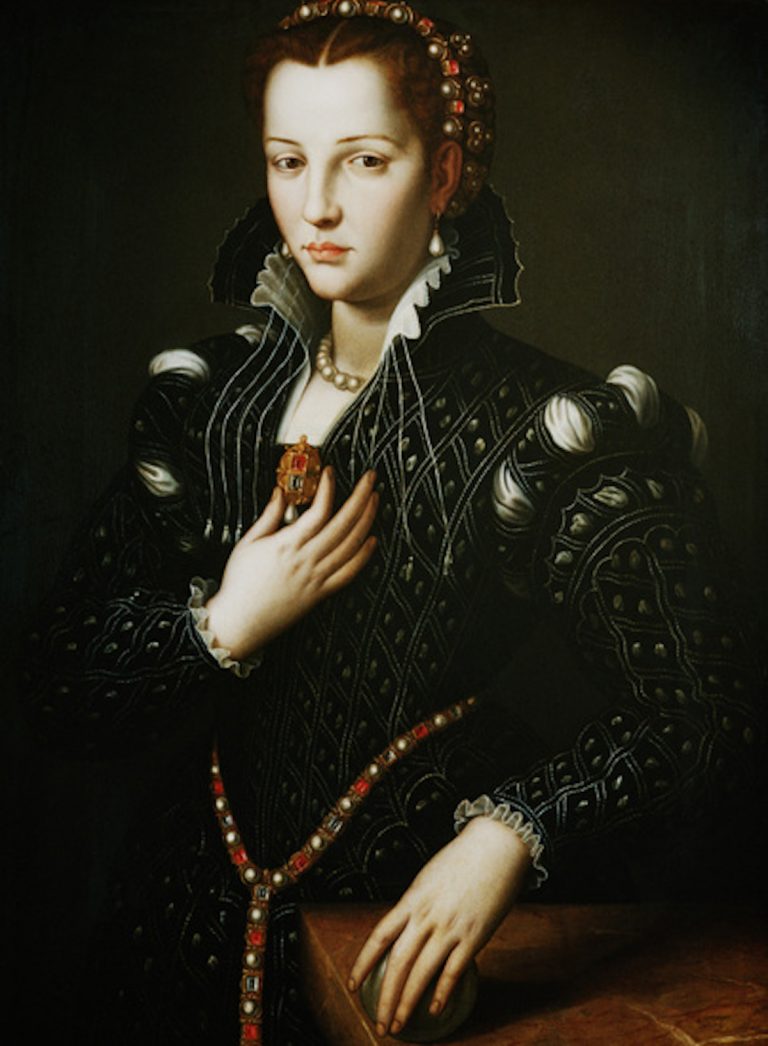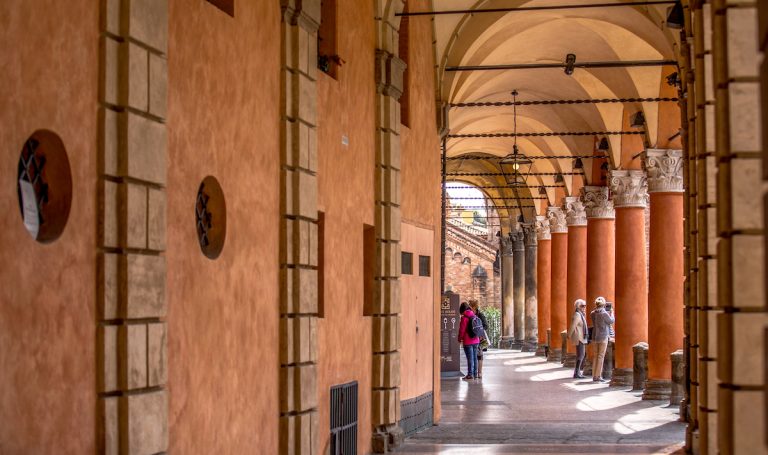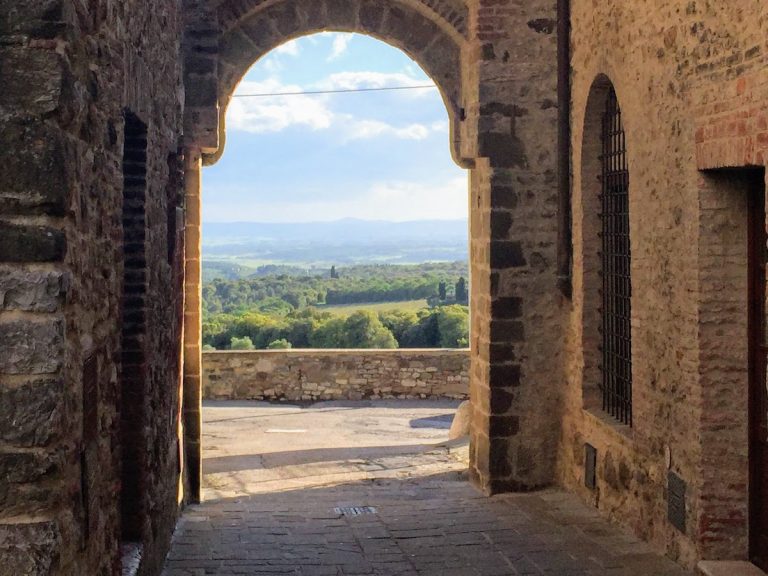Jewish Museum in Ferrara Tells Story of Italian Judaism
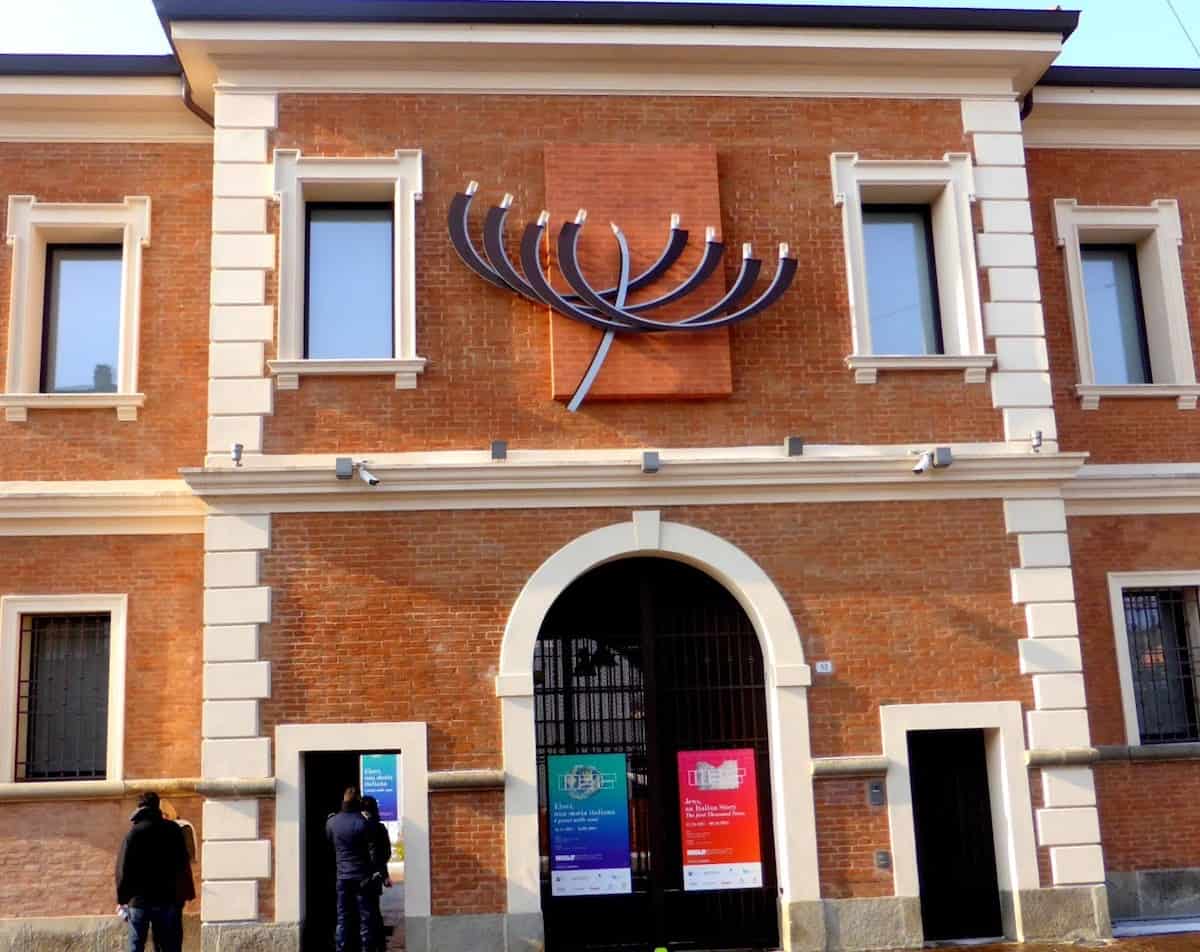
A Jewish museum in Ferrara, Italy, was created to preserve, in one central place, the more than 2000-year-old story of Italian Jews.
Toward that end, in 2003, the Italian parliament established the Museo Nazionale Dell’Ebraismo Italiano e della Shoah (MEIS), a national museum of Italian Judaism in Ferrara, Italy.
The museum showcases the countless contributions made by Italian Jews.
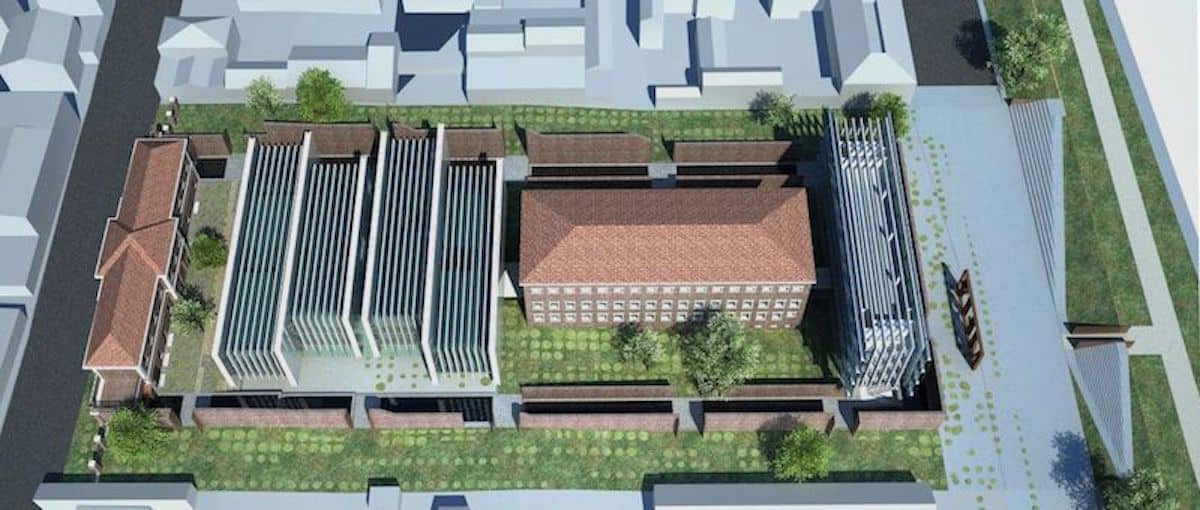
Financed by the Italian Ministry of Cultural Heritage, Activities and Tourism and built at a cost of 47 million euros (valued at approximately $56 million at the time), this living museum first opened in December 2017.
The walled city of Ferrara (in the Emilia Romagna region of Italy) was chosen as its location because of the city’s unique Jewish heritage.
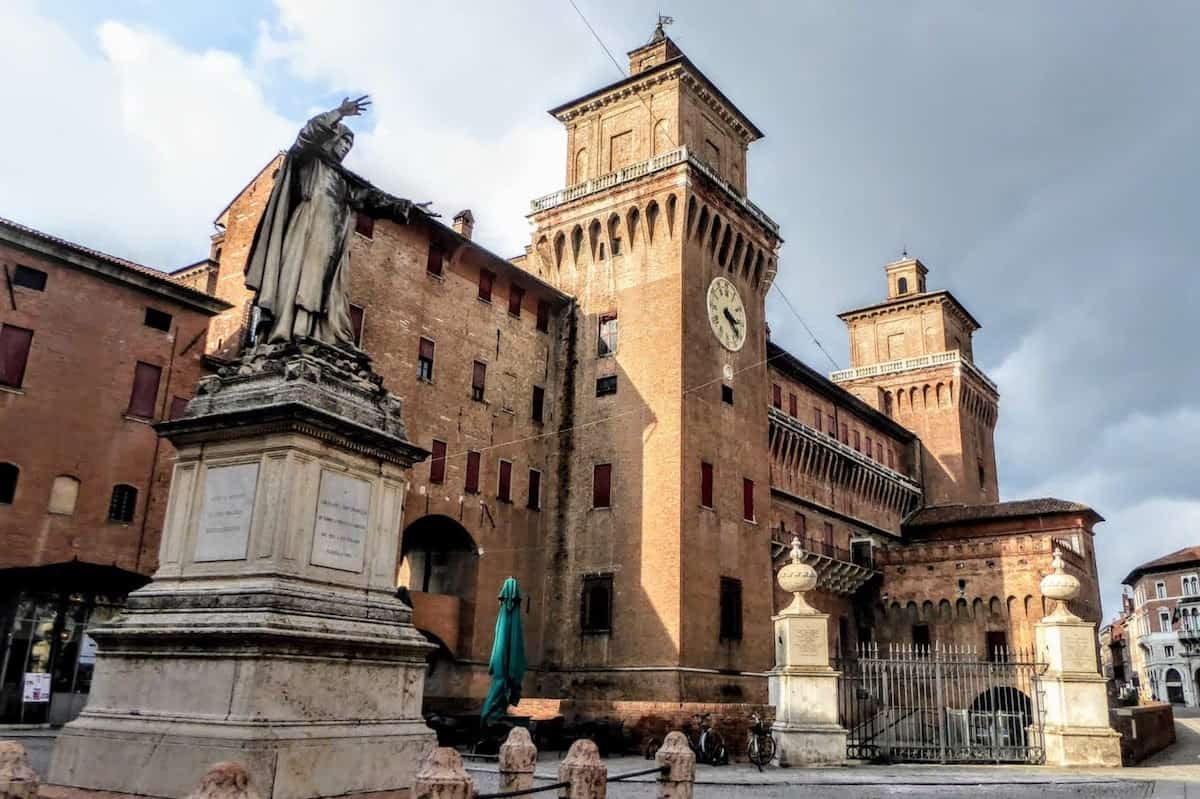
When we returned to Ferrara, we had the opportunity to visit this spectacular museum.
Our Jewish backstory
In what may seem like a curiosity, Jewish people—whether religious or secular—often visit Jewish sites when traveling abroad.
Ironically, this includes those who rarely set foot in a synagogue or practice their religion at home.
Why? These visits offer a glimpse into world history, a snapshot of contemporary Jewry, and an opportunity to connect with locals who share a common heritage.
Also, synagogues are often housed in historic buildings of architectural interest located in storied neighborhoods in cities around the world.
Each time we’ve visited Jewish sites (e.g., synagogues, museums, cemeteries) in Europe in the past, we’ve been saddened to hear similar stories of the expulsion and persecution of Jewish citizens that has taken place over centuries.
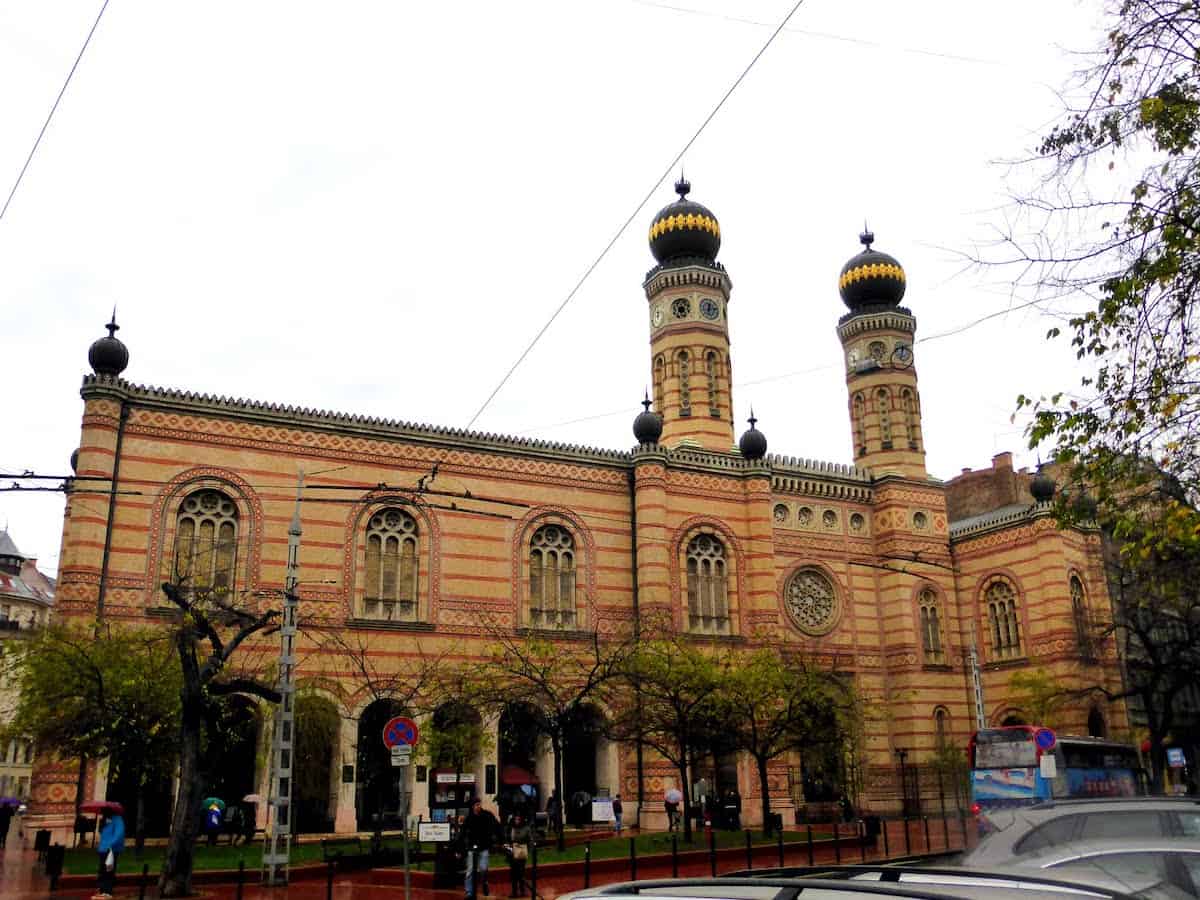
Sometimes (as we discovered in Hungary), we’re even more disheartened to hear about the growing resurgence of anti-Semitism in a country.
Unfortunately, this resurgence parallels the growing harassment and violence against Jews in the U.S.
The Synagogue and Jewish Museum of Ferrara
On one of our prior visits to the Emilia Romagna region, we visited the Synagogue and Jewish Museum of Ferrara, the oldest Jewish house of prayer in Italy.
It was located in an ancient palazzo (at Via Mazzini 95) in what once was the ghetto area of the city.
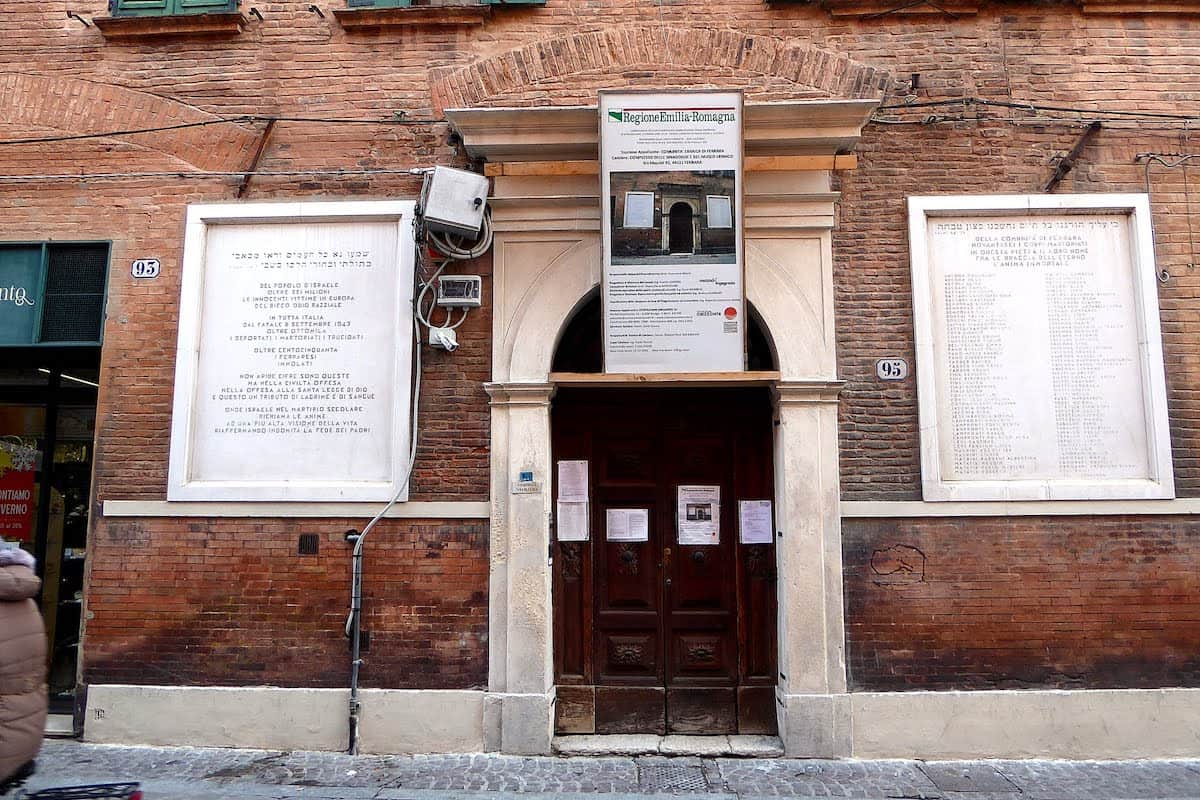
Sadly, the Ferrara synagogue and museum closed down due to structural damage from the 2016 earthquake that struck central Italy.
But a plaque still remains outside the building, memorializing the names of the Jewish residents of Ferrara deported in 1943.
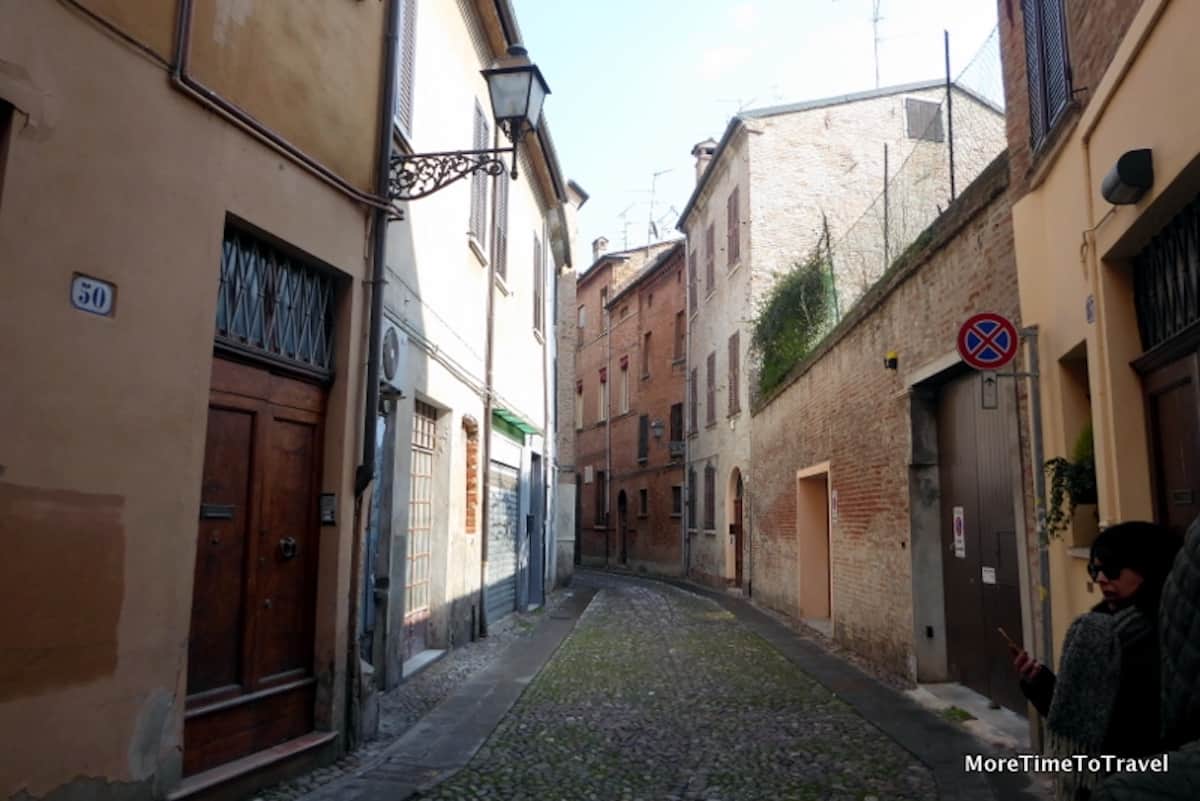
And the strong Jewish legacy in Ferrara hasn’t been forgotten.
Ferrara’s Jewish Legacy
The history of Ferrara has long been entwined with that of Judaism.
The city, under the benevolent rule of the Este family, served as a haven for Jews expelled from other places in Europe—notably Spain and Germany— and Sicily and Rome in Italy.
The Jewish community in Ferrara was segregated in a ghetto from 1627 until the unification of Italy.
Many years later, the Jewish-Italian writer, Giorgio Bassani, documented the marginalized lives of Jews in Ferrara under Fascism. In 1971, one of his most famous novels was made into the Academy Award-winning motion picture, The Garden of the Finzi-Continis.

“Critics have noted that Mr. Bassani wrote of Ferrara, particularly its doomed Jewish community, in the same way that William Faulkner and Tennessee Williams wrote of the Deep South,” said Alessandra Stanley in Bassani’s 2000 obituary in the New York Times.
After World War II, the number of Jewish citizens in Ferrara dwindled to very few, but the city is still noted for its tolerance of diversity and remembrance of the past.
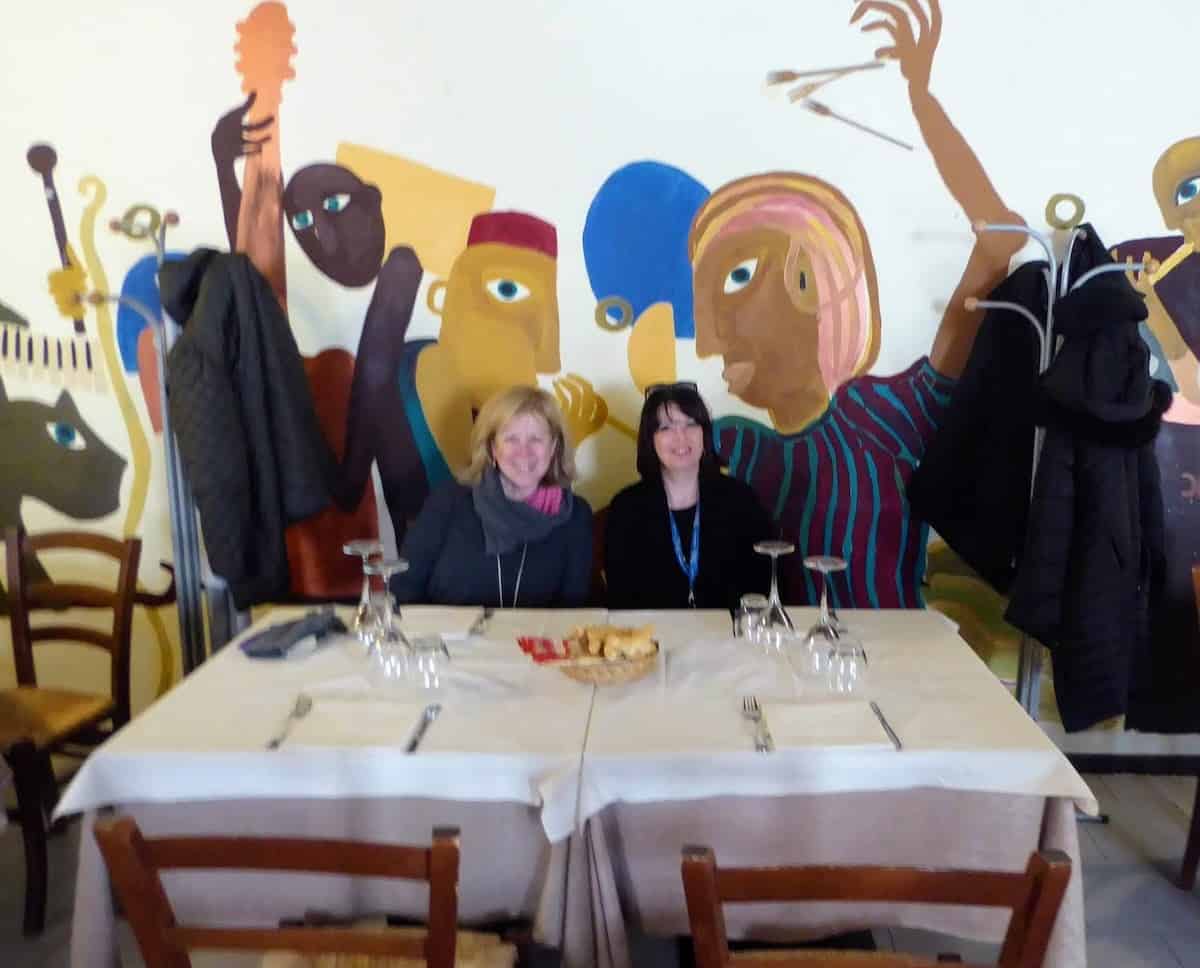
The new Jewish Museum in Ferrara: A prison transformed
Two architects (one Italian and the other a Japanese-American) won the competition to design the contemporary structure for the new MEIS museum in Ferrara.
Walking through the open, airy and visually appealing complex, visitors probably won’t notice (unless they are told) that it is sited on a footprint that housed a 32-cell prison compound with two buildings, built in 1912 and shut down in 1992.
Noteworthy: Giorgio Bassani was imprisoned in this same compound in 1943 for participating in the resistance movement against Mussolini.
A brick building where male prisoners were incarcerated serves as an entryway to the main museum; the building that once housed a female unit has been torn down.
The garden planted in the former prison yard is intended to teach visiting school children about the Jewish rules of eating (kashrut).
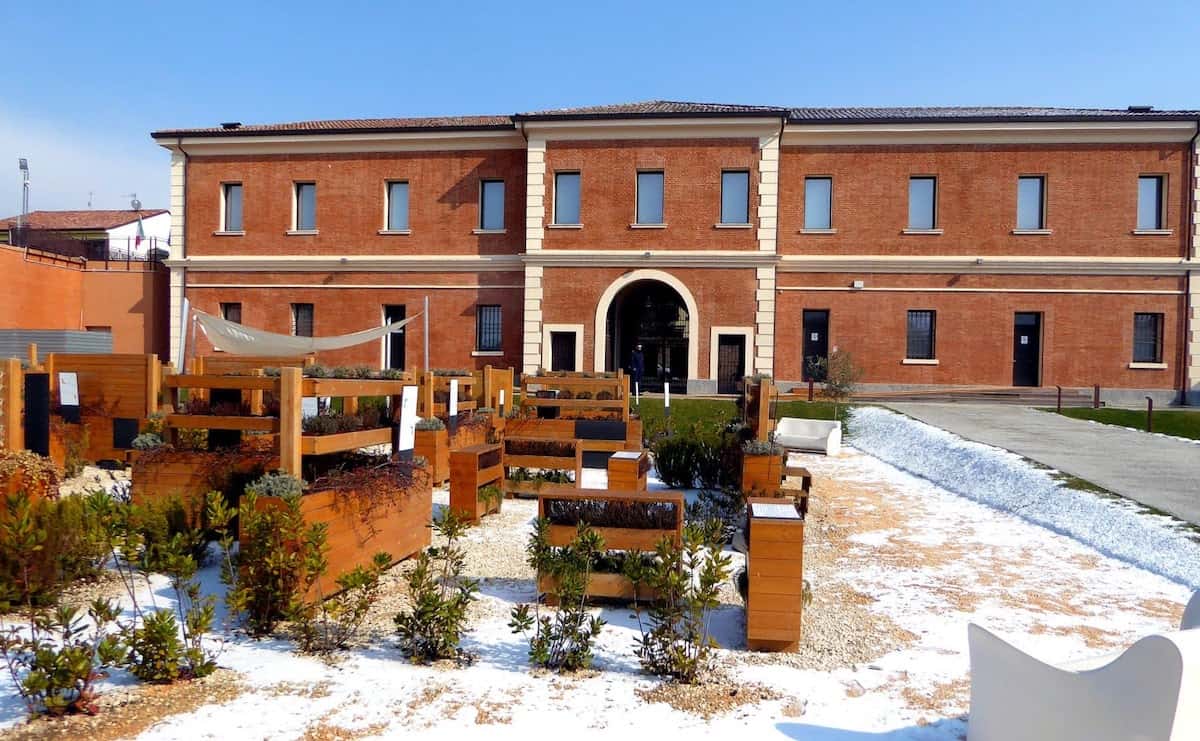
Visionary goals of the Museo Nazionale Dell’Ebraismo in Ferrara
We were fortunate to tour the new museum with its first director, Italian scholar and journalist Simonetta Della Seta.
Della Seta explained that the mission of the new museum is to “recount Judaism, and more specifically, the long, rich experience of Italian Jews from the ancient world to contemporary times.”
“It’s the journey of every Jew,” she adds.
The Shoah (the Holocaust), of course, is a seminal part of that Jewish experience.
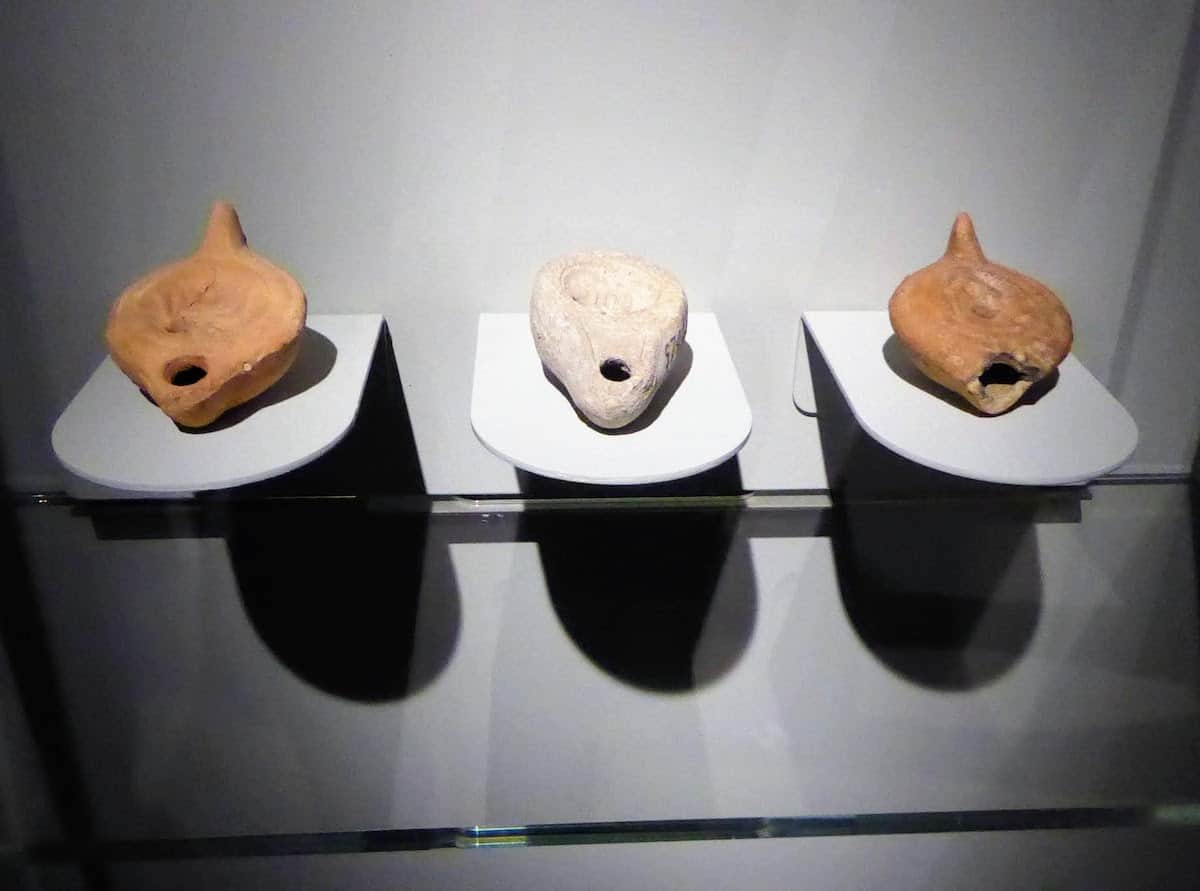
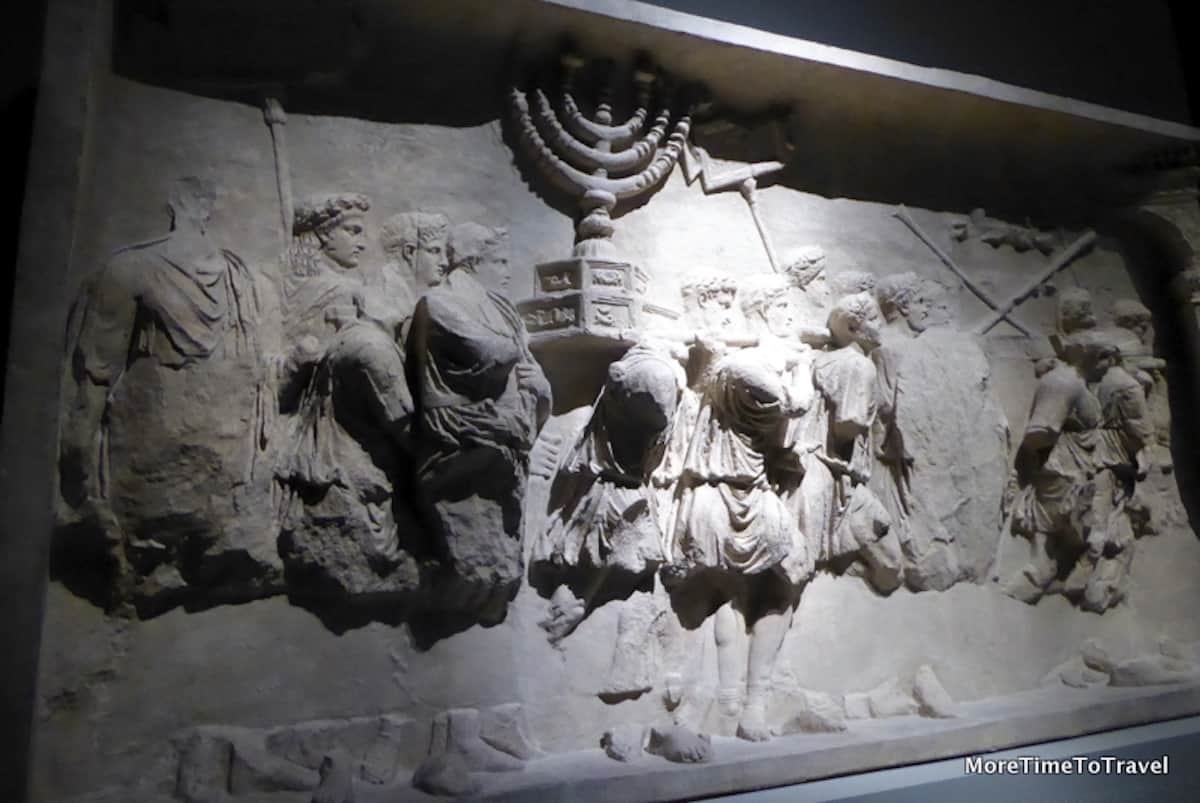
“You’re never alone in the museum,” she says. The knowledge and experience of experts are brought into the small but high-tech rooms (once cells) through sound and video.
While the museum doesn’t have its own collection, it has loaned pieces from all over the world.
The first MEIS exhibition was called “Jews, An Italian Story: The First Thousand Years. This complex story was told both chronologically and geographically. The inaugural exhibit included artifacts, manuscripts and other documents, animations, graphic displays, reconstructions, multimedia displays, and fine art.
Through the eyes of an Italian Jew
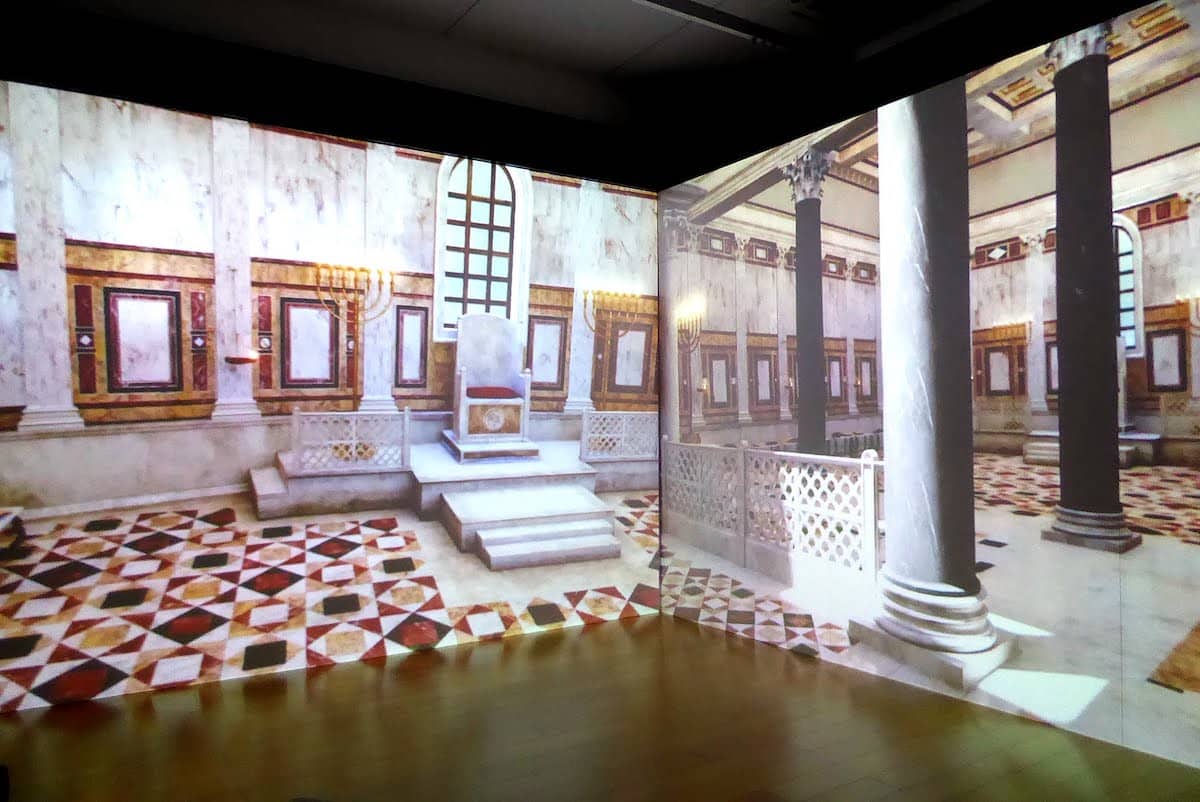
The museum visit ends with a viewing of a gripping 24-minute film called “Through the Eyes of an Italian Jew.”
Visitors sit immersed between two giant screens that make history come alive.
They experience, for example, what it was like to be a Jew deported from Rome or a young Jewish girl expelled from school.
This world-class museum is a must-see for any visitor traveling to the Emilia Romagna region of Italy. Touring with an expert in Jewish history and culture made our experience that much richer.
The museum’s message is relevant and timely to both Jews and non-Jews because a visit stimulates understanding and dialogue about the role of minorities in the larger culture and builds bridges.
“MEIS is not just a museum of memories,” says Della Seta. “Rather, it is a place to come together, a place of meeting, sharing, a place of life.”
What’s appealing to the over-50 luxury traveler?
- The museum offers a curated history of Jews from across Italy, all in one place.
- Before leaving, don’t forget to stop at the excellent book and gift shop.

- From the museum, you can easily walk to the old Jewish ghetto. Hiring a tour guide to show you around the narrow streets will significantly enhance your understanding of the Jews in Ferrara.
- Also nearby: The beautiful Este Castle, as well as other attractions in the historic center, that are well worth visiting.
Take note
- Museum exhibits are captioned in both Italian and English; similarly, the film is also shown in both languages.
- Be sure to allow sufficient time to immerse yourself in the museum. It took us about two hours to go through the first 1000 years.
- The museum is handicapped accessible.
- Wear comfortable shoes. Many of the streets of Ferrara are uneven.
Photo credits: Jerome Levine
An earlier version of this post previously appeared on GettingOnTravel.
IF YOU GO
READ MORE
- Castello Estense in Ferrara: Setting for “The Marriage Portrait” (a historical novel)
Save to Pinterest!!
